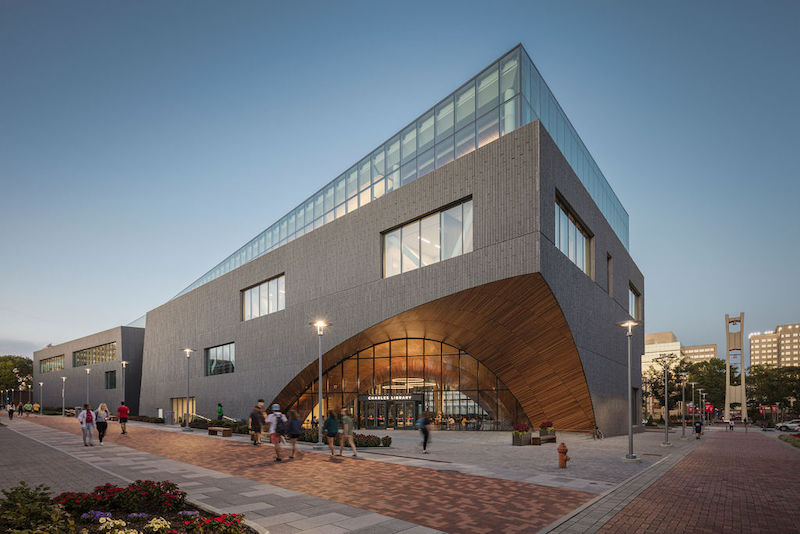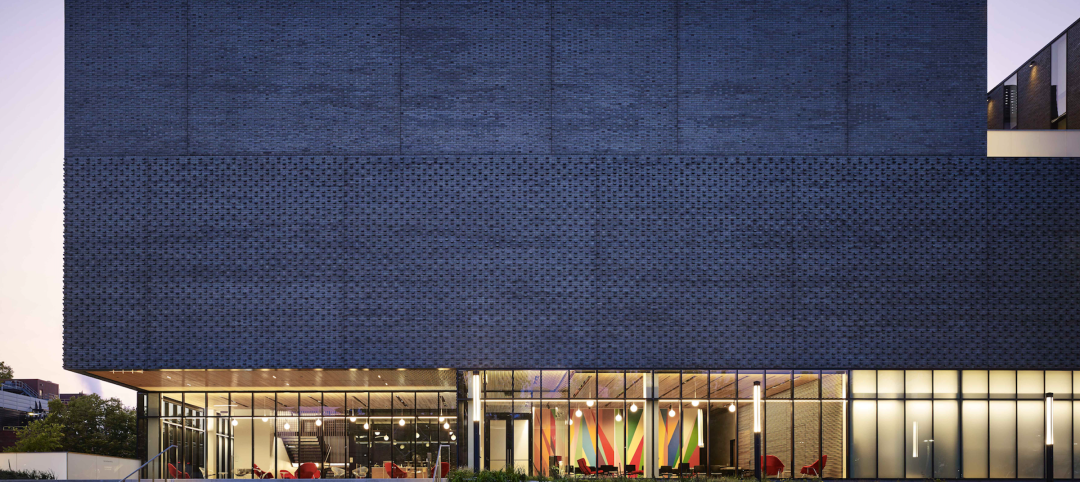As part of a $1.2 billion capital improvement program for Temple University’s Main Campus, the school commissioned Stantec and Snøhetta to design a new library to replace the existing 1960s facility.
The resulting 220,000-sf Charles Library is a technology rich, dynamic environment that anticipates over five million annual visitors. The library’s exterior is highlighted by a solid base clad in split-faced granite and large wooden arched entrances cut into the stone volume. Glass is included at all three entrances to allow natural light into the building and create a sense of transparency.
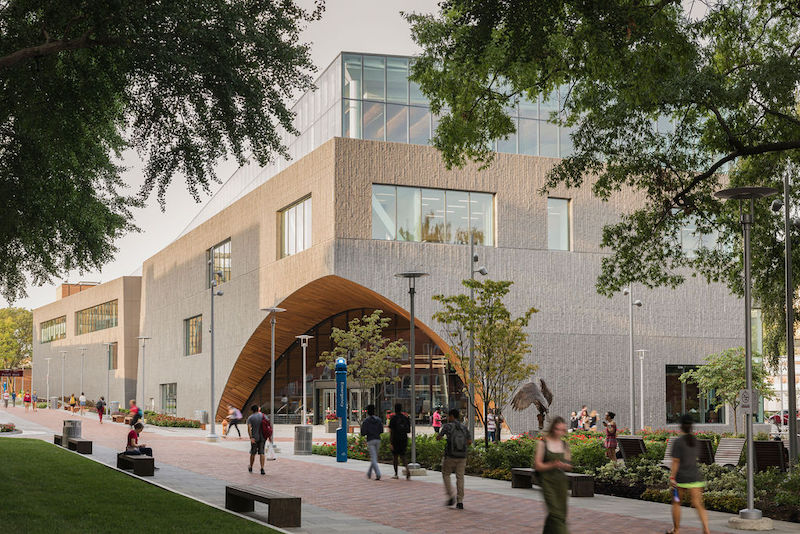
Once inside the building, visitors are greeted by a three-story atrium that offers views of every floor and corner of the building. Light fills the space from an oculus on the top floor and a steel main staircase is located near the information desk. This desk acts as the first interface between library staff and students and facilitates their access to the library collection.
See Also: UMass Amherst’s Worcester Commons to be built on an existing parking lot
The collection includes 13,800 new title volumes near the main entry, 260,000 volumes in browsable stacks, 31,000 special collection volumes in secure high-density storage, and 1.8 million volumes located within an automated storage and retrieval system (ASRS) known as BookBot. The BookBot space is 57 feet tall, spanning three floors, and allows holdings previously housed in off-site deep storage to be relocated on-site. Thanks to BookBot, the space required for book storage is drastically reduced, enabling space for collaboration, academic resources, and individual study space, and access to the library’s collection is expanded.

The library’s second and third floors are anchored by the Student Success Center, which offers writing and tutoring support; the Loretta C. Duckworth Scholars studio, which provides access to digital fabrication and immersive technologies; and Temple University Press. On the fourth floor are two expansive reading rooms, dedicated to graduate, faculty, and undergraduate study.

The fourth floor is glazed on all four sides providing views of a 47,300-sf green roof that covers over 70% of the building’s roof surface. The roof is integrated into the building’s stormwater management system, which is designed to capture rainwater from the campus and manage all rainwater runoff. Forty meeting rooms and study spaces are dispersed throughout the building and are available for reservation. Hunt Engineering was the civil engineer and LERA was the Structural Engineer for the project. Daniel J. Keating was the contractor.
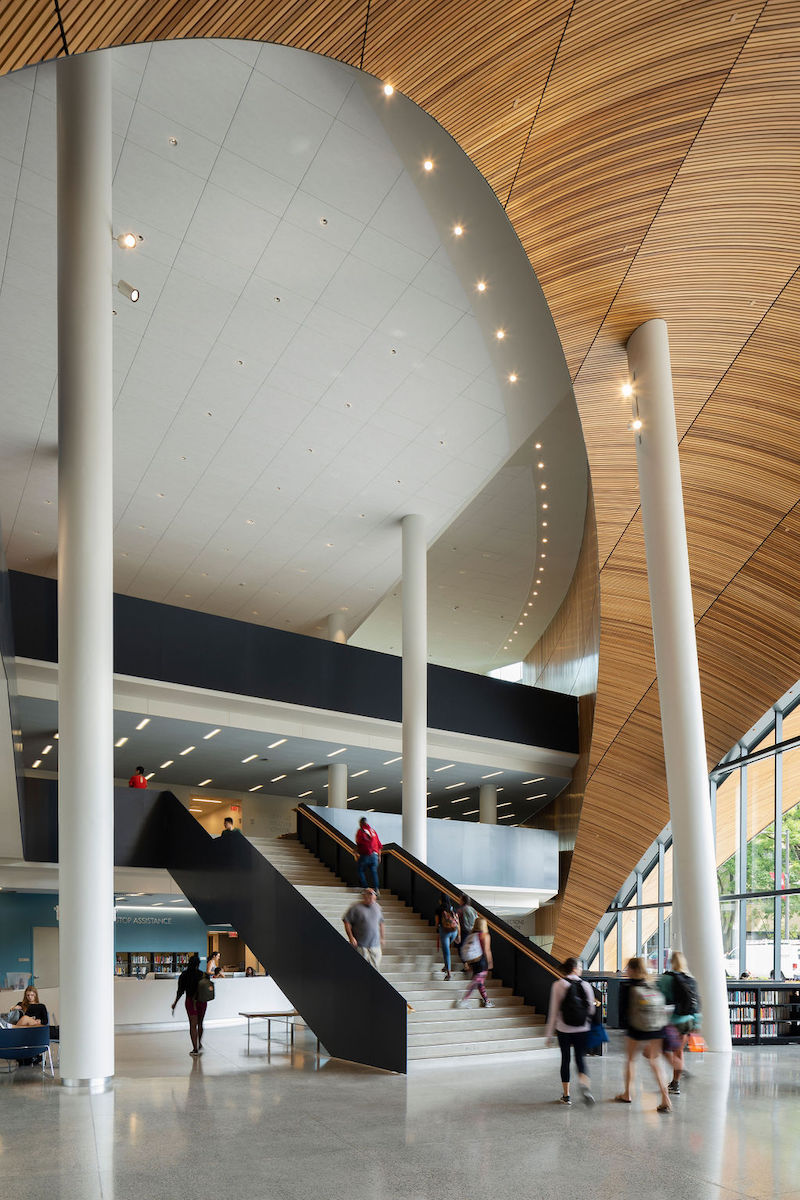
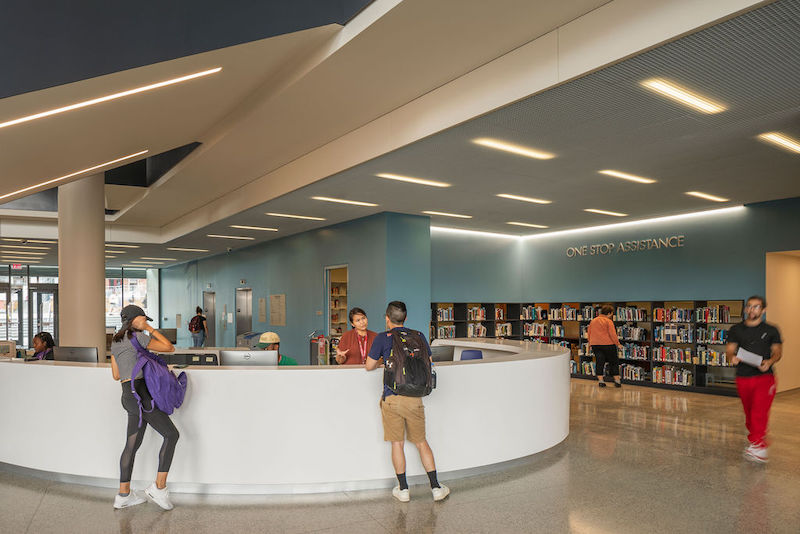
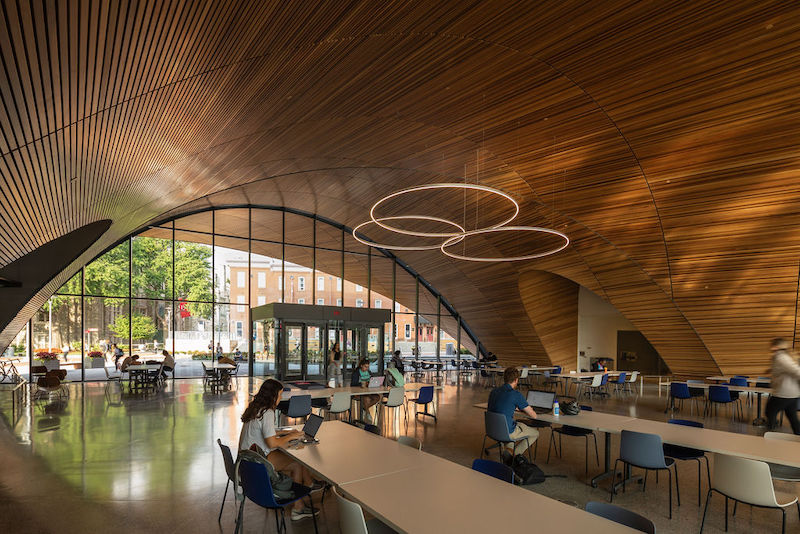
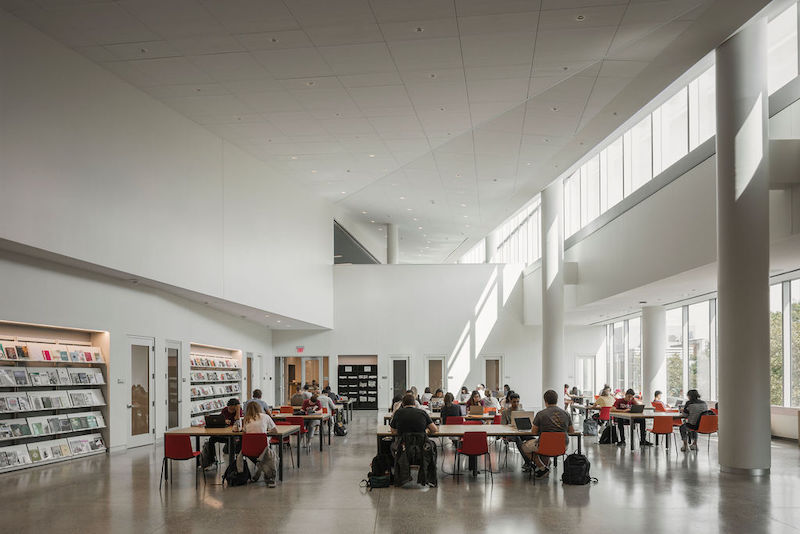
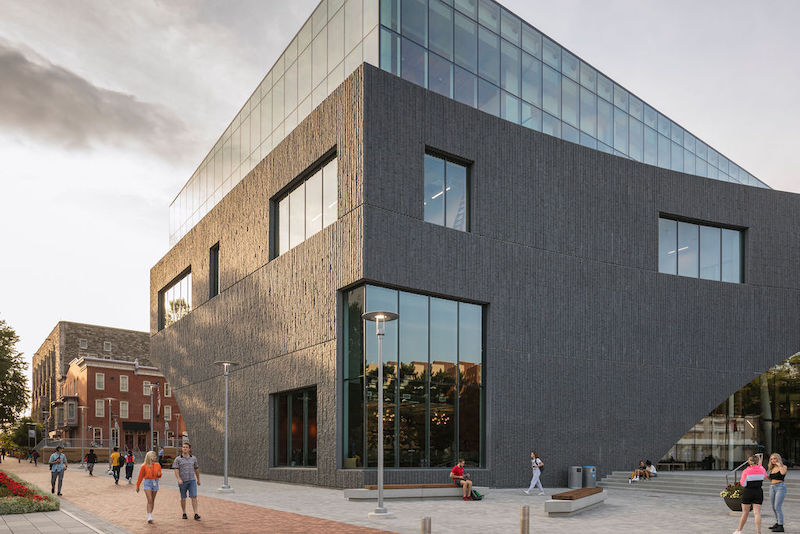
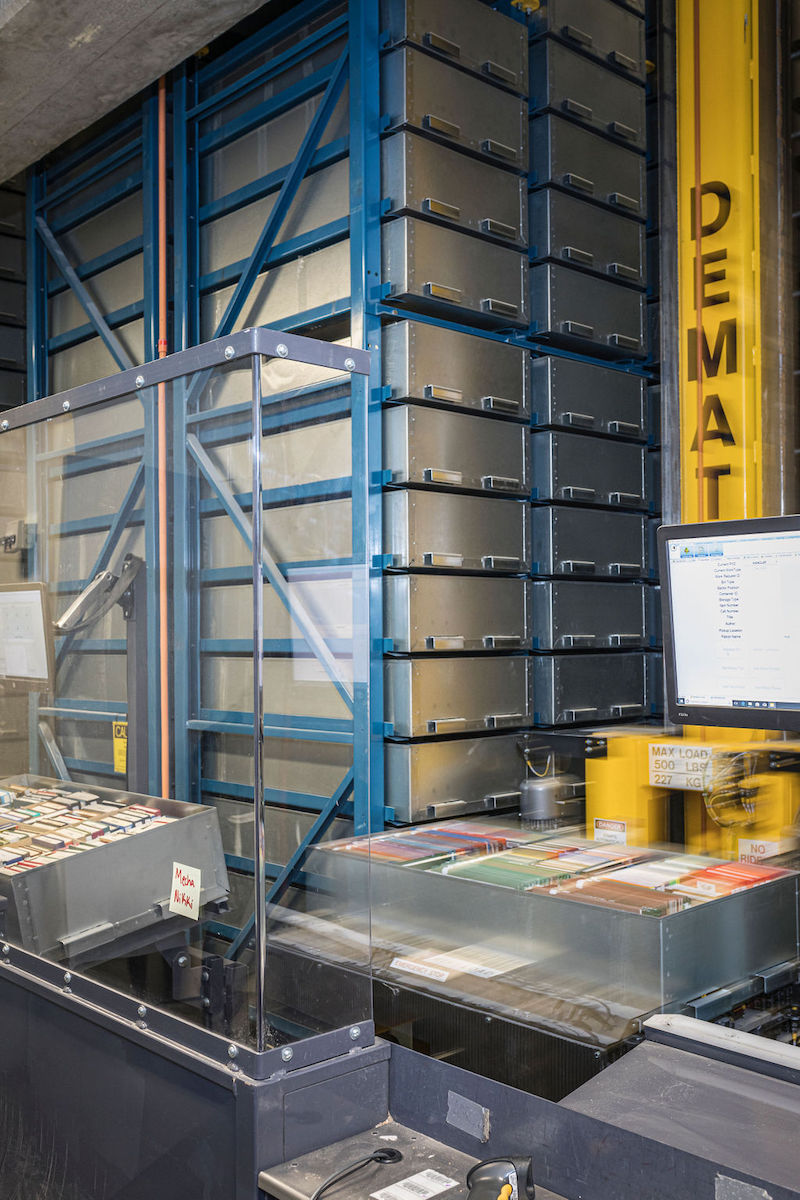
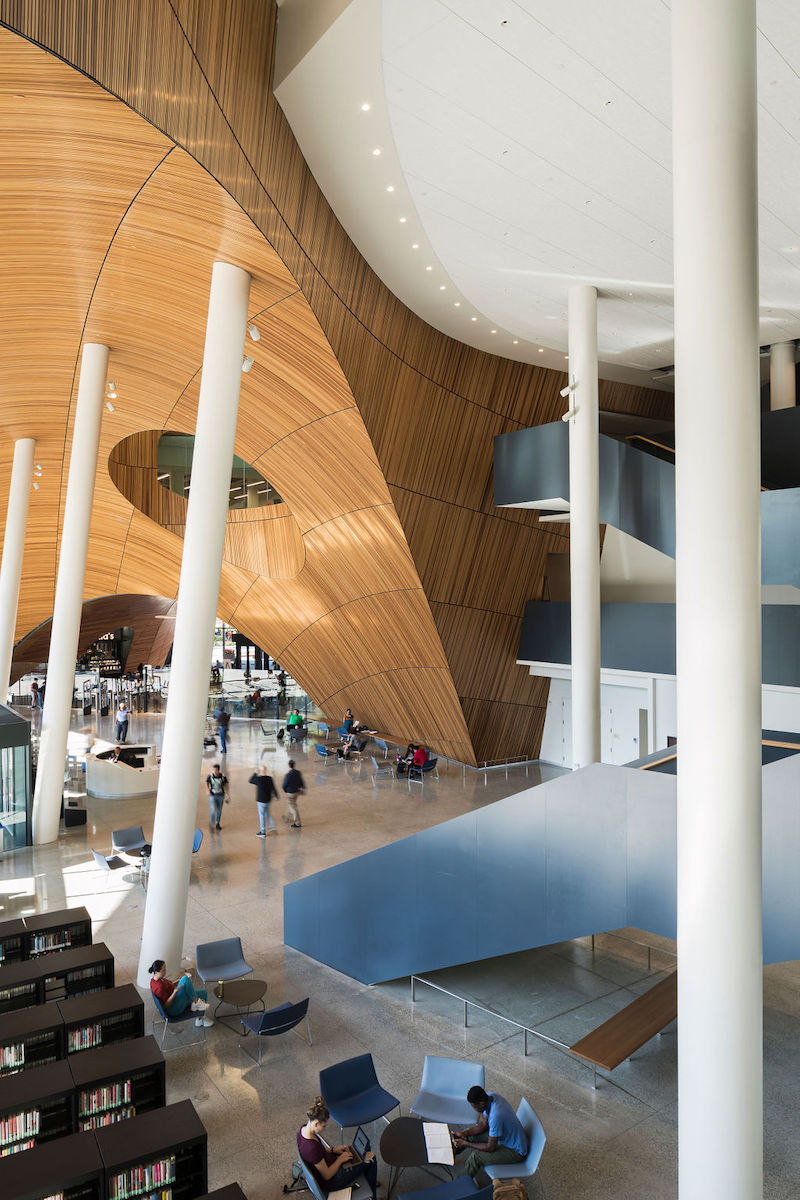
Related Stories
Libraries | Oct 30, 2024
Reasons to reinvent the Midcentury academic library
DLR Group's Interior Design Leader Gretchen Holy, Assoc. IIDA, shares the idea that a designer's responsibility to embrace a library’s history, respect its past, and create an environment that will serve student populations for the next 100 years.
Libraries | Sep 12, 2024
How space supports programming changes at university libraries
GBBN Associate Sarah Kusuma Rubritz, AIA, uses the University of Pittsburgh's Hillman Library to showcase how libraries are transforming to support students’ needs.
Libraries | Aug 1, 2024
How current and future trends are shaping the libraries of tomorrow
Over the last few years, public libraries have transitioned from being buildings that only store and lend books to being fully featured community centers.
Libraries | Jun 7, 2024
7 ways to change 'business as usual': The Theodore Roosevelt Presidential Library
One hundred forty years ago, Theodore Roosevelt had a vision that is being realized today. The Theodore Roosevelt Presidential Library is a cutting-edge example of what’s possible when all seven ambitions are pursued to the fullest from the beginning and integrated into the design at every phase and scale.
Libraries | Apr 24, 2024
New mass timber Teddy Roosevelt library aims to be one with nature
On July 4, 2026, the Theodore Roosevelt Presidential Library is scheduled to open on 93 acres in Medora, a town in North Dakota with under 130 permanent residents, but which nonetheless has become synonymous with the 26th President of the United States, who lived there for several years in the 1880s.
Giants 400 | Feb 8, 2024
Top 20 Public Library Construction Firms for 2023
Gilbane Building Company, Skanska USA, Manhattan Construction, McCownGordon Construction, and C.W. Driver Companies top BD+C's ranking of the nation's largest public library general contractors and construction management (CM) firms for 2023, as reported in Building Design+Construction's 2023 Giants 400 Report.
Giants 400 | Feb 8, 2024
Top 30 Public Library Engineering Firms for 2023
KPFF Consulting Engineers, Tetra Tech High Performance Buildings Group, Thornton Tomasetti, WSP, and Dewberry top BD+C's ranking of the nation's largest public library engineering and engineering/architecture (EA) firms for 2023, as reported in Building Design+Construction's 2023 Giants 400 Report.
Giants 400 | Feb 8, 2024
Top 50 Public Library Architecture Firms for 2023
Quinn Evans, McMillan Pazdan Smith, PGAL, Skidmore, Owings & Merrill, and Gensler top BD+C's ranking of the nation's largest public library architecture and architecture/engineering (AE) firms for 2023, as reported in Building Design+Construction's 2023 Giants 400 Report.
Giants 400 | Nov 6, 2023
Top 65 Cultural Facility Construction Firms for 2023
Turner Construction, Clark Group, Whiting-Turner, Gilbane, and Holder Construction top BD+C's ranking of the nation's largest cultural facilities sector general contractors and construction management (CM) firms for 2023, as reported in the 2023 Giants 400 Report. Note: This ranking includes revenue from all cultural building sectors, including concert venues, art galleries, museums, performing arts centers, and public libraries.
Giants 400 | Nov 6, 2023
Top 60 Cultural Facility Engineering Firms for 2023
KPFF, Arup, Thornton Tomasetti, Tetra Tech, and WSP head BD+C's ranking of the nation's largest cultural facilities sector engineering and engineering architecture (EA) firms for 2023, as reported in the 2023 Giants 400 Report. Note: This ranking includes revenue from all cultural building sectors, including concert venues, art galleries, museums, performing arts centers, and public libraries.


